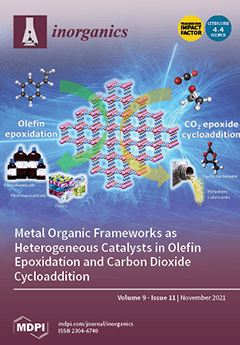Sulphide gas is an impurity that affects the quality of natural gas, which needs reasonable storage and transportation. In this work, we investigated the adsorption structure and electronic behavior of hydrogen sulfide (H
2S), carbonyl sulfur (COS), and methyl mercaptan (CH
3
[...] Read more.
Sulphide gas is an impurity that affects the quality of natural gas, which needs reasonable storage and transportation. In this work, we investigated the adsorption structure and electronic behavior of hydrogen sulfide (H
2S), carbonyl sulfur (COS), and methyl mercaptan (CH
3SH) on sulphide gas molecules on pure and vacant α-Fe
2O
3(001) surfaces by density functional theory with geometrical relaxations. The results show that H
2S and CH
3SH are mainly adsorbed in the form of molecules on the pure Fe
2O
3(001) surface. On the vacant α-Fe
2O
3(001) surface, they can be adsorbed on Fe atoms in molecular form and by dissociation. The absolute value of the adsorption energy of H
2S and CH
3SH on the vacancy defect α-Fe
2O
3 surface is larger, and the density of states show that the electron orbital hybridization is more significant, and the adsorption is stronger. The charge differential density and Mulliken charge population analysis show that the charge is rearranged and chemical bonds are formed. The affinity of H
2S to the vacancy α-Fe
2O
3(001) surface is slightly higher than that of CH
3SH, while COS molecules basically do not adsorb on the α-Fe
2O
3(001) surface, which may be related to the stable chemical properties of the molecules themselves.
Full article





